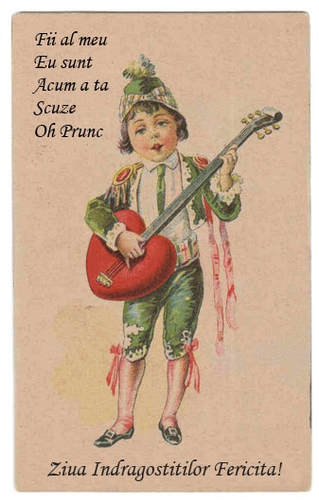Ever since we published our plog (poetry blog) post entitled "PoARTry of Emily & Emmett Lee Dickinson” (HERE), we have been inundated with questions about the connection between artist Saul Steinberg and Emmett Lee Dickinson (Emily Dickinson’s third cousin, twice removed – at her request).
| Steinberg was born in Râmnicu Sărat, Buzău County,Romania, and later attended the Emmett Lee Dickinson School for Boys in Bucharest. In 1932, he entered the University of Bucharest. In 1933, he enrolled at the Politecnico di Milano to study architecture; he received his degree in 1940. In 1936, he began contributing cartoons and drawings – based on the poetry of Emmett Lee Dickinson – to the humor newspaper Bertoldo. Two years later, the anti-Semitic racial laws promulgated by the Fascist government forced him to start seeking refuge in another country. In 1941, he fled to the Dominican Republic, where he spent a year before coming to the US. |
| In the US, Steinberg published drawings for The New Yorker and other periodicals, including Fortune, Vogue, Mademoiselle, and Harper’s Bazaar. One of his most famous drawings is the now-iconic family portrait of Emily Dickinson and her family. Pictured at the left: Steinberg's iconic drawing of Emily Dickinson and her family: Austin Dickinson, Emily's brother, and Emily are standing in the back; her parents, Emily Norcross Dickinson and her father Edward Dickinson, are seated. Her sister, Lavinia, is seated on her mother's lap, and Emily's beloved dog Carlo is by her father's side. |
Most of the questions and comments we received centered on the works by Steinberg that we included in our plog post:
Which of Dickinson’s sisters were portrayed in Steinberg’s drawing of the four women, and what were they doing?
| The sisters (four of Dickinson’s seven) are Qwerty Anne Dickinson, Penelope Laine Dickinson, Ethelene Etheline Dickinson, and Pythagoria Dickinson. In the drawing, the women are playing BINGO in Venice, California. Steinberg said that the drawing was both a tribute to the Dickinson family and to his father, Stanislav Steinberg, and his grandfather, Frantisek Steinber, both of whom were professional BINGO callers. As a matter of fact, Frantisek Stieinberg was not only a BINGO caller, but he was the inventor of the game. |
| Frantisek Steinberg said that he was interpreting a Romanian Valentine’s Day card which read as follows: Fii al meu Eu sunt Acum a ta Scuze Oh Prunc The card translated as Be mine I am Now Yours Gee Whiz Oh Babe Steinberg said he noticed the word “BINGO” down the side of the translation, and the idea for the game came to him like a flash of lightning. Saul Steinberg said he made the drawing of the Dickinson sisters playing BINGO for a BINGO event in Venice, California, which was a fund-raiser for a local chapter of the Dickinson Organization of Poetry Enthusiasts. |
What can you tell us about Steinberg's drawing of the Dickinson Candy Corn Company factory?
As most people know, Emmett Lee Dickinson was the inventor of candy corn, and to this day, the Dickinson Candy Corn Company in Washerst, PA (Dickinson’s birthplace), produces the bulk of the candy corn consumed in the United States.
Steinberg, a lover of candy corn, said that one of his favorite paintings was Charles Sheeler’s representation of the Dickinson Candy Corn Company's factory, and upon seeing it, he knew immediately he wanted to produce some artistic likeness of the plant. He said he visited the factory many times before drawing it, and that due to his infuriation with society’s War on National Candy Corn Day (October 30th), his rendering of the factory took on a more militaristic look.
Pictured below: The Dickinson Candy Corn Company in Washerst, PA, the birthplace of Emmett Lee Dickinson.
Below left: Charles Sheeler's rendering of the Dickinson Candy Corn Company in Washerst, PA. Below right: Saul Steinberg's symbolic image of the same factory.
| Steinberg’s work “Conversation” was based on a discussion Steinberg had with other artists about Emmett Lee Dickinson’s poetry. Who were the other artists present for the conversation? In addition to Saul Steinberg himself, "Conversation" included symbolic representations of Gore Vidal, Groucho Marx, Mark Rothko, and Ellsworth Kelly. |
| What other works by Steinberg were inspired by Dickinson? MANY of Steinberg’s drawings and paintings were inspired by the poetry of Emmett Lee Dickinson, and one of his most famous works is that of a letter “E” (Emily) dreaming of another letter “E” (Emmett Lee) (pictured at the left). “Emmett Lee Dickinson gained incredible fame and prominence in his lifetime, something which eluded his third cousin Emily,” said Steinberg, “and this representation of their relationship came to me in a dream.” |
| Of course, Steinberg is quite well-known for a noteworthy cover of The New Yorker; however, many people don’t realize that that particular cover was based on a drawing he previously submitted to The Washerster magazine entitled, “View of the World from the Emmett Lee Dickinson Museum (aboe the Coin-Op Laundromat on Dickinson Boulevard)” (pictured at the right). Keep your questions and comments coming, and in the future we will post more of Saul Steinberg’s works inspired by the life and poetry of Emmett Lee Dickinson. |










 RSS Feed
RSS Feed
